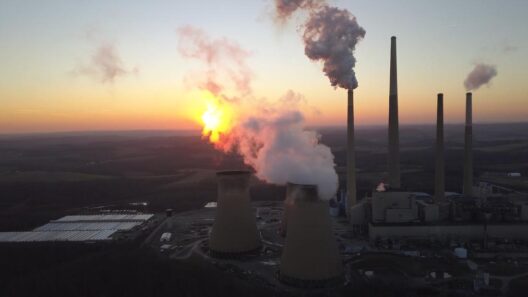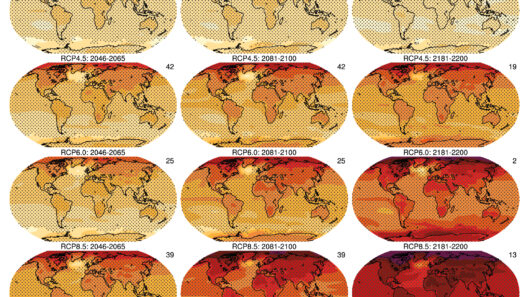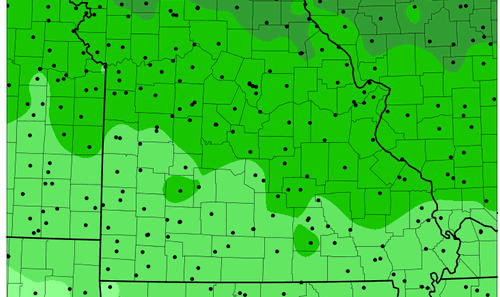As we stand at the precipice of an ecological precipice, it is crucial to comprehend the intricate tapestry of factors driving climate change. This phenomenon, akin to a malevolent specter haunting our planet, is not just a distant threat but a tangible crisis that beckons our urgent attention. Understanding its various causes is akin to unraveling a convoluted narrative where each chapter is interwoven with human activity, natural processes, and systemic indifference.
Foremost among the culprits is the relentless burning of fossil fuels. This practice can be likened to igniting a pyre beneath our very feet. Fossil fuels—coal, oil, and natural gas—are ubiquitous in energy production, transportation, and industry. Their combustion releases an onslaught of carbon dioxide (CO2) into the atmosphere. In 2020, fossil fuel emissions accounted for over 60% of global greenhouse gas emissions. The resulting CO2 forms a blanket around the Earth, trapping heat—a phenomenon known as the greenhouse effect. With each ton of CO2 unleashed, we irreparably alter our climate, leading to rising temperatures, melting glaciers, and shifting weather patterns.
Another significant factor is deforestation, which is often depicted as the silent killer of our ecosystems. Trees, often referred to as the lungs of the planet, absorb carbon dioxide through photosynthesis, thus purifying the air we breathe. When forests are felled, not only do we lose this crucial absorption mechanism, but the carbon stored in trees is released back into the atmosphere, exacerbating the greenhouse effect. Since the turn of the century, vast expanses of the Amazon rainforest and other vital woodlands have succumbed to logging, agriculture, and urban expansion. This devastation not only contributes to climate change but also threatens biodiversity, as countless species face extinction due to habitat loss.
A more insidious, yet equally damaging component of climate change arises from agricultural practices. Our agricultural systems, structured around monoculture and high-input methodologies, have progressively become carbon sinks rather than carbon neutral. The widespread use of nitrogen-based fertilizers releases nitrous oxide, another potent greenhouse gas, into the atmosphere. Livestock farming compounds the problem; methane emissions from enteric fermentation in animals are alarmingly high. Methane is over 25 times more effective at trapping heat than CO2 over a 100-year period. In this light, our dietary choices must be critically examined—what we consume directly influences our planet’s health.
The industrial sector is another key player in the climate shift narrative, similar to a factory of discord. The production of cement, steel, and chemicals releases a substantial volume of carbon emissions. The manufacturing processes are not merely energy-intensive; they often involve the burning of fossil fuels and the release of waste gases. The demand for materials associated with consumer culture—substantial in developed nations and rapidly growing in developing ones—continues to escalate. This spiral demonstrates how closely our consumption habits intertwine with environmental degradation.
Transportation represents yet another labyrinthine contributor to climate change. The vehicle-centric infrastructure dominating much of the modern world relies heavily on the combustion of fossil fuels. The transportation sector—encompassing cars, trucks, ships, and airplanes—is responsible for nearly 14% of global greenhouse gas emissions. Here, the gears of progress have become intertwined with a carboniferous nightmare, as fossil fuel dependency fuels both air pollution and climatic upheaval. Transitioning towards electric vehicles and public transport systems must be prioritized if we are to mitigate these effects.
Industrial agriculture, deforestation, and fossil fuel consumption all intertwine with the negligence of policymakers, representing a pervasive culture of complacency. Political inertia often mirrors a bird caught in climate turbulence, rendered immobile by indecision. Detractors may argue that environmental regulations can stifle economic growth; however, sustainable practices are tantamount to rejuvenating the economic landscape. The transition to a green economy—leveraging renewable energy sources and sustainable resource management—promises a future not constrained by the chains of environmental degradation.
Moreover, the role of pollution as a catalyst for climate change cannot be overlooked. The interaction of aerosols in the atmosphere has profound implications for climate dynamics by modifying sunlight reflection and altering precipitation patterns. Though certain aerosols may momentarily cool the Earth through reflection, their long-term consequences—including the formation of smog and respiratory diseases—are perilous. Navigating this paradox presents complexities, as it raises questions about balancing immediate human health with the overarching need for climate stability.
In a world of increasingly unpredictable environmental impacts, the question of responsibility must also be addressed. Wealthy nations, often the historical contributors to greenhouse gas emissions, bear a burden of stewardship. Their responsibility extends beyond their borders, necessitating support for developing nations grappling with the repercussions of climate change they did not create. This nexus of global inequality necessitates a concerted effort towards equitable solutions, with both technological innovation and financial aid being crucial components in the quest for meaningful climate justice.
As we navigate the waters of climate change, understanding its myriad causes reveals a complex interplay of society, economy, and the environment. Ignoring this intricate relationship will not only threaten the survival of countless species but also endanger future generations. The pathway to sustainable solutions demands engagement, innovation, and an unwavering commitment to ecological balance. Let us not allow our planet’s warming to become a narrative of despair, but rather a call to action, echoing loudly across oceans, forests, and urban landscapes.







